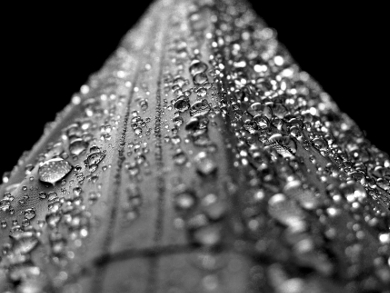Microfluidic devices use chemical gradients to drive small amounts of liquid. Physical gradients can drive liquids as well: Stephanie Hiltl and Alexander Böker, Fraunhofer Institute for Applied Polymer Research, Potsdam-Golm, Germany, propelled water droplets across surfaces using interfacial energy imbalances between the droplets’ leading and trailing edges.
The researchers made substrates with sine wave-shaped wrinkles by coating stretched poly(dimethylsiloxane) with rigid silica and allowing the strain to relax. Various preparation methods created wrinkles of constant size or gradient wrinkle patterns. Water droplets remained stationary on substrates that were flat or that had uniform wrinkles. Contact angles were greater on the wrinkled substrates, indicating less wetting.
Droplets jumped sideways as they made contact with wrinkle-gradient substrates, and then moved toward the smaller wrinkles. Contact angles were intermediate between those for the flat and the uniform-wrinkle substrates, but each droplet had a larger contact angle on the leading edge than on the trailing edge. As a droplet moved, its two contact angles decreased and became closer in size. The droplet’s leading edge pinned to the substrate, freed itself, and pinned again. The trailing edge moved continuously.
The researchers foresee using wrinkled substrates for microfluidic devices, sensors, or transport systems for reagents or drugs.
- Wetting Phenomena on (Gradient) Wrinkle Substrates,
Stephanie Hiltl, Alexander Böker,
Langmuir 2016.
DOI: 10.1021/acs.langmuir.6b02364




